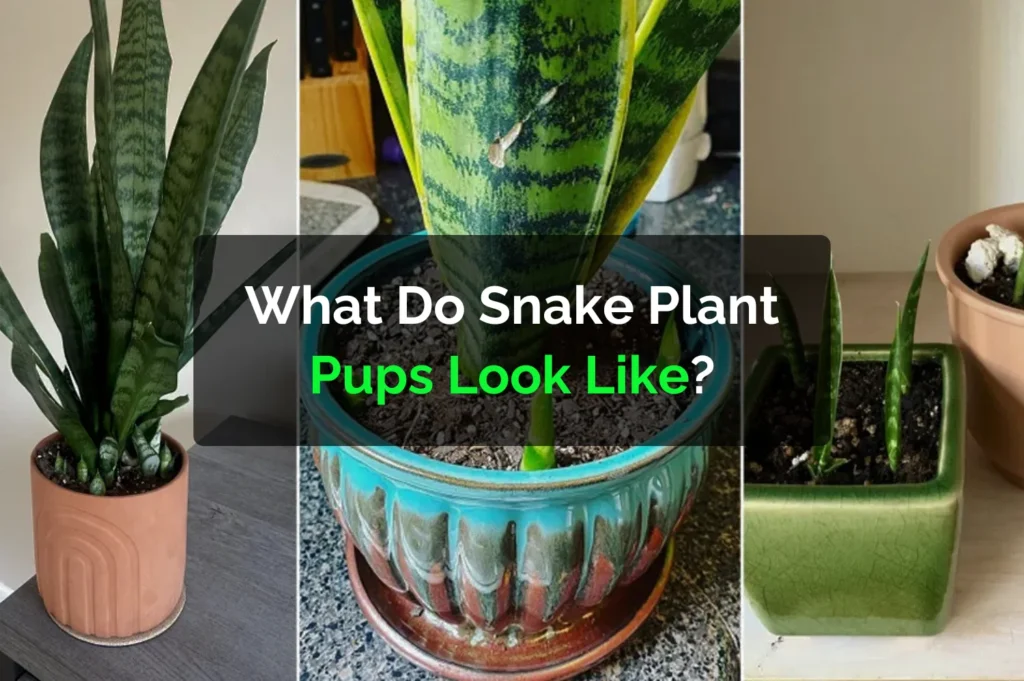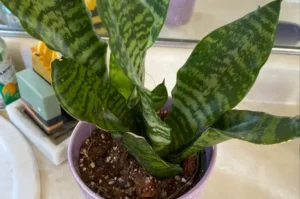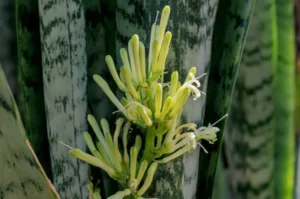If you’re a proud snake plant owner, you’ve likely noticed new little shoots sprouting at the base of your plant. These tiny green surprises are called pups, baby snake plants that grow from the mother plant. But what exactly do these pups look like? And how can you tell if your plant is producing healthy new growth?
In this article, we’ll take a closer look at snake plant pups, how to identify them, and what to do when you see them. Whether you’re a beginner or an experienced plant lover, this guide will help you understand the early stages of snake plant propagation.
What Are Snake Plant Pups?
Snake plant pups are small offshoots that grow from the root system of the mother plant. They are essentially baby snake plants that share the same root structure as the original plant. Over time, these pups develop their own roots and can be separated to grow as independent plants.
These pups are a natural part of the snake plant’s reproduction process, especially when the plant is healthy, mature, and growing in favorable conditions.
What Do Snake Plant Pups Look Like?
At first, snake plant pups can be hard to spot. Here’s what to look for:
1. Tiny Vertical Leaves
Snake plant pups start as small vertical shoots. These young leaves usually appear right next to the base of the main plant. They’re light green at first, often smoother and more tender than the mature leaves. Over time, they begin to grow thicker and take on the same dark green, sword-like shape as the parent plant.
2. Rosette Formation
Some pups emerge in a small rosette pattern, meaning several leaves grow in a circular form. This is especially common in varieties like Sansevieria trifasciata ‘Hahnii’, which is known for its compact shape.
3. Closer to the Soil
Pups always emerge from below the soil line. You may need to gently move the topsoil aside to get a better look at their base. They’re often attached to a thick underground root called a rhizome, which connects them to the mother plant.
4. Color and Texture
In the beginning, pups have a brighter green color than the mature leaves. They are also more delicate. As they grow, the color deepens, and the familiar patterns of the mother plant begin to appear.
When Do Snake Plants Produce Pups?
Snake plants don’t always produce pups right away. Here are the ideal conditions for pup development:
- Mature Plant: A healthy, well-established plant is more likely to produce pups.
- Bright, Indirect Light: While snake plants tolerate low light, brighter conditions encourage growth.
- Proper Watering: Overwatering can harm roots. Water only when the top inch of soil is dry.
- Right Pot Size: A slightly root-bound plant is more likely to produce pups than one in an oversized pot.
Should You Leave the Pups or Remove Them?
Whether to keep the pups attached or separate them depends on your goals.
Leave Them:
If you want a fuller, bushier plant, leave the pups where they are. Over time, the pot will fill up with new growth, creating a beautiful, dense cluster.
Remove Them:
If you want to propagate the plant or share it with others, wait until the pup is at least 3–4 inches tall. At this stage, it usually has its own root system. Gently remove the plant from the pot, find the connecting rhizome, and cut it with a clean, sharp knife. Replant the pup in fresh soil and water lightly.
How to Care for Snake Plant Pups After Separation
Once you separate the pups, it’s important to care for them properly to ensure they thrive:
- Use Well-Draining Soil: A cactus or succulent mix is ideal.
- Keep in Bright, Indirect Light: Avoid harsh sun, which can burn the new leaves.
- Water Sparingly: Let the soil dry out between waterings.
- Don’t Fertilize Immediately: Wait a few weeks before feeding, as fresh roots can be sensitive.
Can You Grow Snake Plant Pups in Water?
Yes, you can! If you separate a pup with a rhizome but no roots, you can place it in a jar of water. Make sure only the rhizome touches the water—avoid submerging the leaves. Place the jar in bright, indirect light and wait for roots to develop. Once roots appear, you can transplant the pup into soil.
Common Mistakes to Avoid
- Separating Pups Too Early: Tiny pups without a root system may not survive on their own.
- Overwatering: New plants are very sensitive to excess water. Keep watering minimally.
- Not Using Clean Tools: Always use sterilized tools when cutting the rhizome to avoid infection.
- Ignoring Lighting Needs: Poor light can slow the pup’s growth or cause it to rot.
Final Thoughts
Seeing pups grow from your snake plant is a sign that you’re doing something right. These adorable new shoots are the start of a new plant life, and with the right care, they can grow into healthy, mature snake plants of their own.
By understanding what snake plant pups look like and how to care for them, you’re one step closer to expanding your indoor garden naturally. Whether you leave them attached or grow them separately, snake plant pups are a rewarding part of the plant parenting journey.






